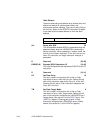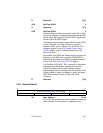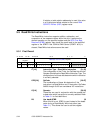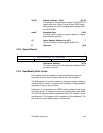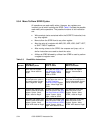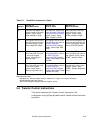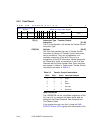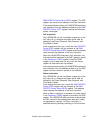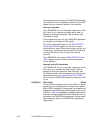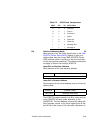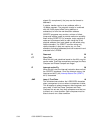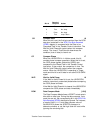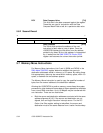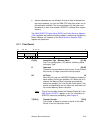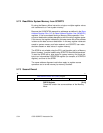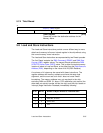5-28 SCSI SCRIPTS Instruction Set
If the comparisons are false, the LSI53C875A fetches the
next instruction from the address pointed to by the DSP
register and the instruction pointer is not modified.
Interrupt Instruction
The LSI53C875A can do a true/false comparison of the
ALU carry bit, or compare the phase and/or data as
defined by the Phase Compare, Data Compare, and
True/False bit fields.
If the comparisons are true, the LSI53C875A generates
an interrupt by asserting the IRQ/ signal.
The 32-bit address field stored in the DMA SCRIPTS
Pointer Save (DSPS) register can contain a unique
interrupt service vector. When servicing the interrupt, this
unique status code allows the Interrupt Service Routine
to quickly identify the point at which the interrupt
occurred.
The LSI53C875A halts and the DMA SCRIPTS Pointer
(DSP) register must be written to before starting any
further operation.
Interrupt-on-the-Fly Instruction
The LSI53C875A can do a true/false comparison of the
ALU carry bit or compare the phase and/or data as
defined by the Phase Compare, Data Compare, and
True/False bit fields. If the comparisons are true, and the
Interrupt-on-the-Fly bit (Interrupt Status One (ISTAT1)
bit 2) is set, the LSI53C875A asserts the Interrupt-on-the-
Fly bit.
SCSIP[2:0] SCSI Phase [26:24]
This 3-bit field corresponds to the three SCSI bus phase
signals that are compared with the phase lines latched
when SREQ/ is asserted. Comparisons can be performed
to determine the SCSI phase actually being driven on the
SCSI bus. Table 5.5 describes the possible combinations
and their corresponding SCSI phase. These bits are only
valid when the LSI53C875A is operating in Initiator mode.
Clear these bits when the LSI53C875A is operating in
Target mode.



